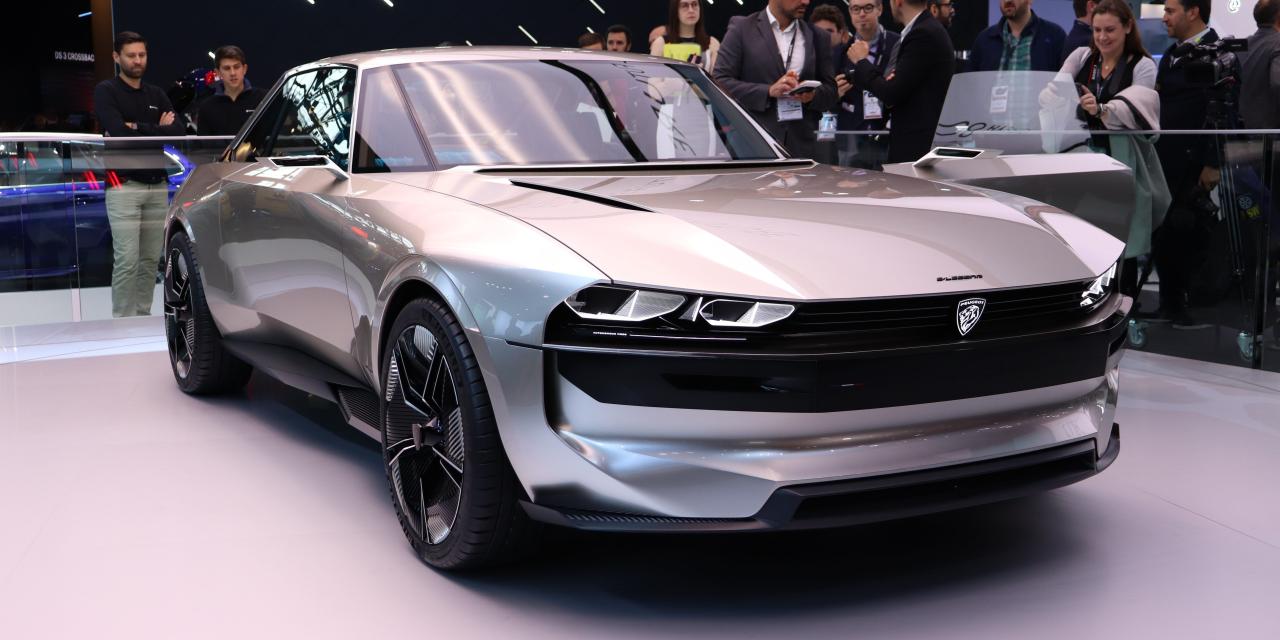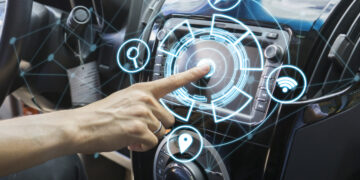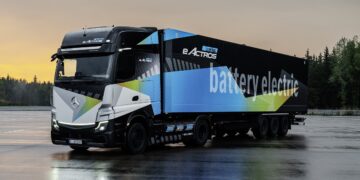The automotive industry is experiencing a seismic shift as groundbreaking innovations redefine what vehicles are and what they can achieve. Today’s cars are no longer mere means of transport; they are complex, integrated systems that blend engineering, electronics, and software to create safer, smarter, and more sustainable driving experiences. This transformation is fueled by advancements in electric powertrains, autonomous systems, lightweight materials, and vehicle connectivity—all of which propel next-generation engineering to new heights.
In this article, we delve deep into the modern innovations reshaping automotive design and manufacturing. We examine key technological breakthroughs, explore their impacts on performance and safety, and discuss the future trends that will continue to drive progress in the industry. From the integration of artificial intelligence to the advent of sustainable materials, every aspect of automotive technology is evolving. Our comprehensive exploration covers everything you need to know about how car innovations are paving the way for next-gen engineering.
The Evolution of Automotive Engineering
Automotive engineering has come a long way from the rudimentary steam engines and basic mechanical designs of the early days. Today, a modern vehicle is a marvel of integrated technology, where traditional engineering meets digital innovation. Over the decades, the following factors have been instrumental in this evolution:
A. Technological Advancements: The rapid development of computer technology, sensors, and data analytics has enabled precise control over vehicle functions, from engine performance to safety systems.
B. Consumer Demand: Modern drivers expect more than just transportation; they demand safety, efficiency, and connectivity, pushing manufacturers to incorporate high-tech features into every model.
C. Environmental Concerns: As the global community becomes more aware of climate change, there is an increasing drive towards sustainable solutions, such as electric vehicles (EVs) and hybrid systems.
D. Regulatory Pressure: Governments worldwide are implementing stricter emissions and safety standards, compelling manufacturers to innovate continually to meet these guidelines.
These factors have converged to create a landscape where innovation is the cornerstone of automotive engineering, transforming the way vehicles are designed, built, and operated.
Key Innovations in Modern Cars
The rapid progress in automotive technology can be categorized into several core areas that are pushing the boundaries of traditional engineering.
A. Electric Vehicles and Sustainable Powertrains
Electric vehicles (EVs) have revolutionized the automotive market by offering a cleaner and more efficient alternative to internal combustion engines. The shift towards electrification is one of the most significant trends in automotive innovation today.
- Battery Technology: Modern lithium-ion batteries, along with emerging solid-state batteries, have greatly improved energy density, longevity, and charging speed.
- Regenerative Braking: This technology converts kinetic energy into electrical energy during braking, enhancing overall efficiency.
- Hybrid Systems: Combining electric power with traditional engines allows for improved fuel economy and reduced emissions during the transitional phase towards full electrification.
The benefits of EVs extend beyond environmental sustainability; they offer quieter operation, lower maintenance costs, and innovative driving experiences. Automakers are continuously investing in research and development to further extend driving range and reduce charging times, making EVs an increasingly viable option for consumers.
B. Autonomous Driving Technologies
Self-driving cars are no longer a futuristic concept—they are rapidly becoming a reality. Autonomous driving technology is poised to revolutionize road safety and efficiency by reducing human error and optimizing traffic flow.
A. Levels of Autonomy:
- Level A: Basic driver assistance features like lane-keeping and adaptive cruise control.
- Level B: Semi-autonomous systems that allow for hands-free operation in certain scenarios.
- Level C: Highly autonomous vehicles that can manage complex driving environments but still require human oversight.
- Level D/E: Fully autonomous systems capable of operating without any human intervention.
B. Sensor Technologies:
- Lidar: Uses laser pulses to measure distances and create 3D maps of the surroundings.
- Radar: Detects objects and measures their speed and distance using radio waves.
- Cameras: Provide high-resolution visual data, enabling sophisticated object recognition algorithms.
C. Artificial Intelligence Integration:
- Machine Learning: AI systems analyze vast amounts of data to make real-time decisions on vehicle control.
- Neural Networks: These networks learn from millions of miles of driving data to improve navigation and safety protocols.
Autonomous driving systems are expected to reduce accidents significantly, ease traffic congestion, and pave the way for innovative mobility solutions such as ride-sharing and smart city integration.
C. Advanced Driver Assistance Systems (ADAS)
ADAS has become a crucial component of modern vehicles, offering features that assist drivers and enhance safety. These systems are designed to reduce human error by providing real-time alerts and automated interventions.
A. Adaptive Cruise Control (ACC):
- Automatically adjusts the vehicle’s speed based on traffic conditions.
B. Lane Departure Warning (LDW):
- Alerts drivers when they drift out of their designated lane.
C. Automatic Emergency Braking (AEB):
- Detects imminent collisions and applies brakes to reduce impact severity.
D. Blind Spot Monitoring (BSM):
- Notifies drivers of other vehicles in adjacent lanes to prevent potential accidents.
E. Traffic Sign Recognition:
- Identifies road signs and informs the driver, ensuring compliance with speed limits and traffic rules.
These safety features not only protect drivers and passengers but also contribute to smoother traffic flow and a reduction in road accidents.
D. Connected Car Technologies
The digital revolution has led to the development of connected car technologies, which integrate vehicles with advanced communication systems to enhance the driving experience.
A. Vehicle-to-Vehicle (V2V) Communication:
- Enables cars to share information about their speed, position, and direction, reducing the risk of collisions.
B. Vehicle-to-Infrastructure (V2I) Communication:
- Connects vehicles with traffic signals, road signs, and other infrastructure to optimize traffic management.
C. Over-the-Air (OTA) Updates:
- Allows manufacturers to remotely update vehicle software, improving performance and adding new features without requiring a visit to the service center.
D. Infotainment Systems:
- Provide drivers and passengers with navigation, entertainment, and connectivity options that integrate seamlessly with smartphones and other devices.
Connected car technologies are transforming vehicles into smart devices, making them an integral part of the Internet of Things (IoT). This connectivity not only enhances the overall driving experience but also enables new business models in mobility and transportation services.
E. Lightweight Materials and Advanced Manufacturing
The pursuit of fuel efficiency and performance has led to significant advancements in the materials used in car manufacturing. Lightweight materials such as carbon fiber, aluminum, and high-strength steel are now commonplace in modern vehicles.
A. Carbon Fiber Reinforced Polymers (CFRP):
- Offer exceptional strength-to-weight ratios, improving both performance and fuel efficiency.
B. Aluminum Alloys:
- Provide a lightweight alternative to traditional steel, reducing vehicle mass without compromising safety.
C. High-Strength Steel:
- Used in critical structural components to enhance crashworthiness and durability.
D. 3D Printing and Additive Manufacturing:
- Allow for rapid prototyping and production of complex components, reducing waste and manufacturing costs.
Advanced manufacturing techniques and innovative materials are at the heart of modern automotive design. By reducing vehicle weight, manufacturers can improve fuel efficiency, enhance performance, and reduce emissions—all critical factors in today’s environmentally conscious market.
The Impact of Car Innovations on Next-Gen Engineering
The innovations in automotive technology are not only transforming the vehicles themselves but are also driving broader changes in engineering and manufacturing. The integration of advanced technologies in car design is influencing several key areas:
A. Enhanced Safety and Reliability
Innovative safety systems and autonomous technologies are making vehicles significantly safer. The integration of sensors, AI, and real-time data analysis has reduced the likelihood of accidents caused by human error. Moreover, advanced materials and structural designs improve the crashworthiness of vehicles, protecting occupants during collisions.
B. Improved Energy Efficiency and Sustainability
The global shift towards electrification and the use of sustainable materials are having a profound impact on energy efficiency. Electric powertrains, coupled with regenerative technologies, offer a cleaner, more sustainable alternative to traditional engines. These advancements contribute to reducing greenhouse gas emissions and promoting a greener future.
C. Revolutionizing Manufacturing Processes
New manufacturing techniques such as additive manufacturing, robotics, and AI-driven quality control are streamlining production processes. These innovations lead to reduced production times, lower costs, and increased precision in car manufacturing. Automation and digital twins—virtual replicas of physical vehicles—enable engineers to simulate and optimize designs before physical production, minimizing errors and enhancing efficiency.
D. Fostering Innovation in Design
With the advent of new materials and connected technologies, automotive designers have more freedom than ever to innovate. Modern car designs incorporate aerodynamic elements, customizable interiors, and advanced infotainment systems that cater to consumer preferences for both style and functionality. This creative freedom results in vehicles that are not only technologically advanced but also aesthetically appealing.
E. Driving Economic Growth and Job Creation
The rapid evolution of automotive technology is fueling economic growth by creating new markets and job opportunities. The demand for skilled professionals in areas such as AI, data analytics, and advanced manufacturing is on the rise. Additionally, the growth of related industries, including battery production, charging infrastructure, and software development, is contributing to a vibrant, interconnected ecosystem that supports economic development.
Future Trends in Automotive Engineering
As we look ahead, several emerging trends promise to further revolutionize the automotive industry and next-generation engineering.
A. Full Autonomy and Beyond
The journey toward fully autonomous vehicles will continue to accelerate. As sensor technologies improve and AI algorithms become more sophisticated, we can expect the gradual introduction of vehicles that operate entirely without human intervention. Future trends include:
A. AI-Driven Fleet Management:
- Systems that manage and optimize entire fleets of autonomous vehicles for urban mobility solutions.
B. Smart Infrastructure Integration: - Development of infrastructure that communicates directly with autonomous vehicles, creating a fully connected transportation ecosystem.
C. Regulatory Advances: - Evolving safety and legal standards that will support the widespread adoption of fully autonomous vehicles.
B. Sustainable Innovations and Green Technologies
The automotive industry is at the forefront of the global push for sustainability. Future innovations will likely focus on:
A. Next-Generation Batteries:
- Research into solid-state batteries and alternative energy storage methods to extend driving ranges and reduce charging times.
B. Renewable Energy Integration: - Increased use of solar panels and other renewable technologies integrated directly into vehicles.
C. Eco-Friendly Manufacturing: - Adoption of circular economy principles and sustainable production practices that minimize waste and reduce environmental impact.
C. Enhanced Connectivity and the Internet of Vehicles (IoV)
The integration of vehicles with broader digital ecosystems will continue to evolve, driving further innovation in connectivity:
A. 5G and Beyond:
- Ultra-fast networks that enable seamless communication between vehicles, infrastructure, and mobile devices.
B. Advanced Telematics: - Data-driven insights that optimize vehicle performance, maintenance schedules, and overall fleet management.
C. Cybersecurity Enhancements: - Robust security protocols to protect the vast amounts of data generated by connected vehicles.
D. Innovations in Materials Science
Material science will remain a critical area of innovation for automotive engineering. Future trends include:
A. Nanotechnology Applications:
- Development of advanced nanomaterials that enhance strength, reduce weight, and improve energy efficiency.
B. Biodegradable Components: - Exploration of environmentally friendly materials that reduce the long-term environmental impact of vehicles.
C. Smart Materials: - Integration of materials that can adapt to changing conditions, such as self-healing composites or materials that adjust their properties in real time.
Case Studies: Industry Leaders and Breakthrough Projects
To understand the real-world impact of these innovations, it is essential to look at some case studies where cutting-edge technology is already making a difference.
A. Electric Revolution at a Global Automaker
A leading global automobile manufacturer has made significant strides in transitioning to an electric vehicle lineup. By investing heavily in battery technology, production facilities, and charging infrastructure, the company has reduced its carbon footprint and increased market share. Their vehicles now feature state-of-the-art battery management systems, advanced ADAS, and connectivity options that cater to the modern consumer’s expectations.
B. Autonomous Driving Pioneers
Several technology firms and automotive companies are collaborating to develop autonomous driving systems. These initiatives involve extensive testing and data collection, paving the way for vehicles that can navigate complex urban environments without human intervention. Through partnerships with tech giants and regulatory bodies, these pioneers are setting the standards for future autonomous fleets.
C. Sustainability in Manufacturing
A prominent automotive brand has integrated sustainable practices into its manufacturing process by adopting recycled materials, implementing energy-efficient production lines, and pursuing certifications for green manufacturing. This approach not only reduces environmental impact but also sets a benchmark for the entire industry.
Challenges and Considerations for Next-Gen Engineering
Despite the promising innovations, several challenges must be addressed to ensure a smooth transition to next-generation automotive engineering.
A. Cybersecurity Threats
As vehicles become more connected and software-driven, they are increasingly vulnerable to cyberattacks. Ensuring robust cybersecurity measures—from encryption to real-time threat monitoring—is critical for protecting both consumers and manufacturers.
B. Infrastructure Limitations
The widespread adoption of electric and autonomous vehicles requires significant upgrades to existing infrastructure. Investments in charging stations, smart roads, and communication networks are essential to support the next-gen automotive landscape.
C. Regulatory Hurdles
Evolving technologies often outpace existing regulatory frameworks. Policymakers must work closely with industry leaders to establish safety standards, privacy protections, and legal guidelines that accommodate rapid technological advancements.
D. High Research and Development Costs
Innovating in advanced automotive technologies requires substantial investment in research and development. Balancing these costs while delivering affordable, high-quality vehicles is a constant challenge for manufacturers.
E. Consumer Adaptation
While technological advancements offer numerous benefits, consumer acceptance can vary. Educating drivers on the safety, efficiency, and convenience of new technologies is crucial to ensure widespread adoption.
Conclusion
The rapid pace of automotive innovation is transforming not only the way vehicles operate but also the very fabric of next-generation engineering. Electric powertrains, autonomous driving systems, advanced safety features, and sustainable manufacturing practices are converging to create vehicles that are smarter, safer, and more environmentally responsible. As these technologies continue to mature, they promise to revolutionize the automotive industry and redefine mobility for generations to come.
Manufacturers, engineers, policymakers, and consumers must all collaborate to address the challenges and harness the potential of these advancements. The future of automotive engineering is bright, driven by relentless innovation and a shared commitment to a safer, more sustainable world of transportation.














